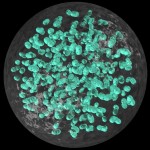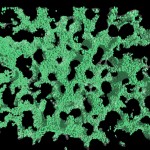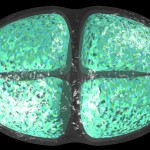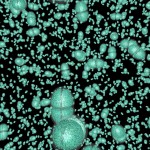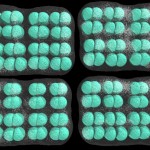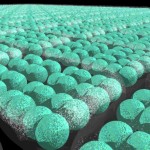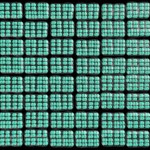This second post on non-filamentous cyanobacteria is about different forms of colony formation, which depend on the geometry of cell division. Aphanotheca, which has been shown in an earlier posting on cyanobacteria is a simple example, where the plains of cell division are oriented randomly and the new cells are surrounded by a common spherical matrix. Aphanotheca is a large genus with many species distributed in a wide range of habitats.
- Aphanotheca
Genera like Microcystis divide in a random way as well, but the resulting cells are integrated in irregular rather than spherical structures. Members of this genus are able to accumulate in large numbers under suitable conditions forming large algal blooms. Such blooms often result in oxygen deprivation of the waters affected and eventually are responsible for the production of specific toxins.
- Microcystis
On the other hand, there are cyanobacteria dividing in a very regular way, like, in this example, Chroococcus. The colonies of Chroococcus are formed by two subsequent divisions, with the plain of division turned by 90 degress.
- Chroococcus
- Chroococcus
Colonies of Merismopedia are formed by a very similar principle. Plains of subsequent divisions are turned by 90 degrees. In addition this rotation of the plain of division always occurs around the same axis. Here colonies are separated from each other only after a considerable amount of divisions. This way Merismopedia is able to form extended sheets.
- Merismopedia
- Merismopedia

